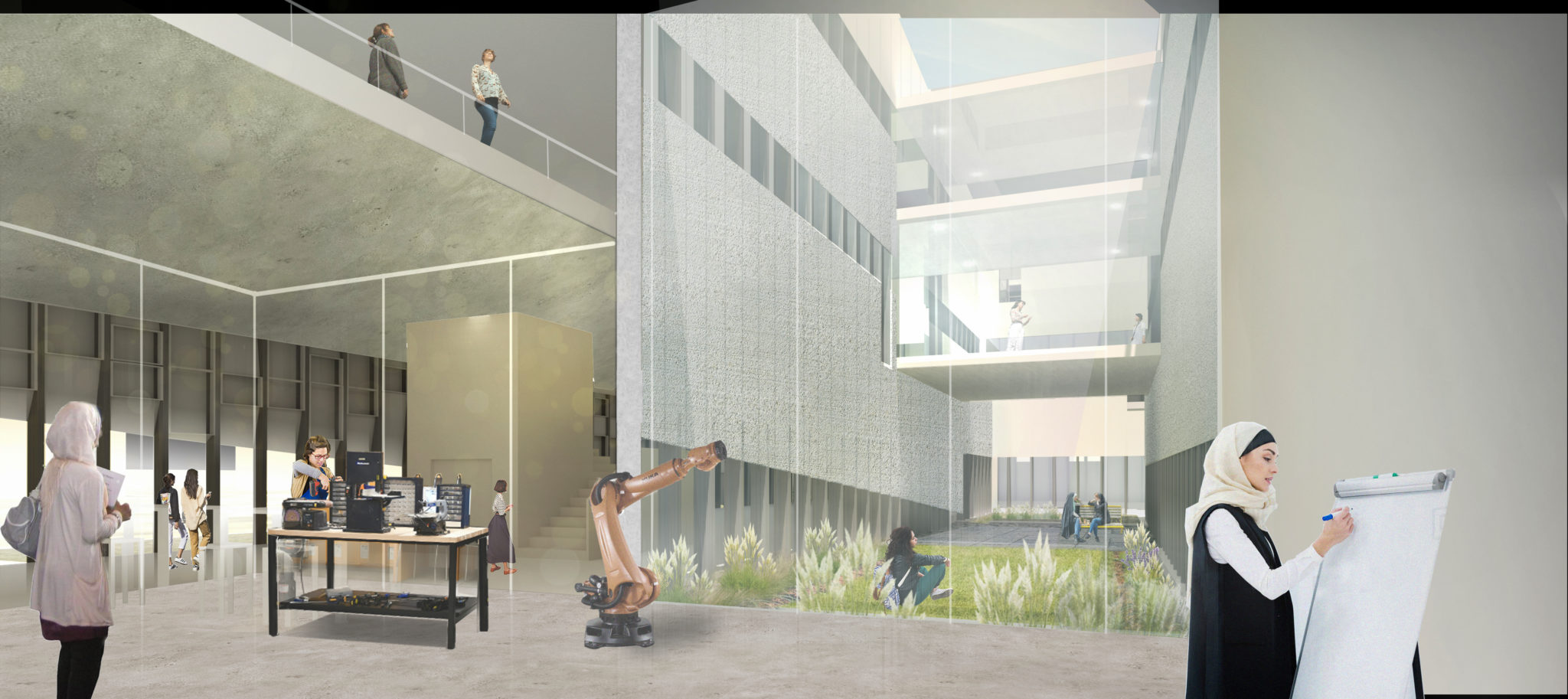
Courtesy of Vincent Wilczynski
High school students will soon be able to enroll in a new technology school in Kabul, Afghanistan, housed in a building designed by students from the Yale School of Architecture.
Afghan tech entrepreneur Roya Mahboob enlisted a team of five students at the School of Architecture to deliver conceptual designs for a school and “makerspace” housed in Kabul University. The Yale team, led by Yale Architecture Professor Sunil Bald, spent the summer working in the Center for Engineering Innovation and Design. The school, which will be called the Dreamer Institute, is focused on STEAM — science, technology, engineering, art and mathematics. The school is particularly notable as it will be a technology school attended by both boys and girls — a concept that would have “been impossible just a few years ago,” according to a Sept. 26 Yale MacMillan Center press release.
“There’s a long-term intention for this school to be the first of multiple iterations throughout Afghanistan and other countries, to serve as a model of this kind of campus-based innovation center focused on education for girls,” Camille Chabrol ARC ’20 told the News.
The idea was conceived in 2017, when Mahboob led an all-girl Afghan robotics team to participate in FIRST Robotics — an international high school robotics competition held in the U.S. in 2017 — according to CEID Director Vincent Wilczynski. When the team’s visas were denied twice, it garnered international attention. Through that exchange, a group of Yale students began to mentor the team.
On that trip, Mahboob’s team visited several technology-focused high schools, according to the press release.
“We went to these schools and saw how the students worked together — all the girls wanted this back home,” Mahboob said in the Sept. 26 release. “We did some research about STEM schools and figured out what we needed to bring one to Afghanistan.”
After that experience, she reached out to Wilczynski — who also serves as the deputy dean of the School of Engineering and Applied Science — who connected her to SEAS, the Architecture School and MacMillan Center to collaborate on the Dreamer Institute.
According to students who worked on the design, the project proved to be a unique learning experience.
“Typically what you have is a client who is pretty adamant about what they want incorporated into the design,” said Michelle Badr ARC ’20. “For this [project], it wasn’t like that. Roya Mahboob gave us visionary ideas for what she wanted us to do, but there was nothing tangible to work with.”
The architectural team looked at both university makerspaces, such as Yale’s CEID, and traditional Afghan architecture.
According to Jerome Tryon ARC ’20, part of the challenge was coming up with a design that is both “aspirational” and one that “can be an icon for Afghanistan and for the program,” while also being culturally sensitive.
“We couldn’t exactly import our ideas from Western culture about what that architecture should be, we had to respond to the particular needs,” he said.
The final design concept is two interlocking buildings. The design is modeled to allow the makerspace to maintain a more public presence and the school itself to be more secure. The team noted to the News that security concerns made it a priority to have multiple exit points out of the school. The two buildings, while structurally separate, could later be connected.
“The idea is that right now, while they might be completely separated from each other, … over time, with social behavior evolving, [connection points] will be unlocked and it can be unified into one building,” Badr said.
As of now, Yale students’ involvement has come to an end. The next step is to propose building systems and get a cost estimate for construction, according to Bald. In the Sept. 26 press release, Mahboob expressed hopes that the Institute would be running in 2021.
The Yale School of Architecture was founded in 1916.
Serena Lin | serena.lin@yale.edu







